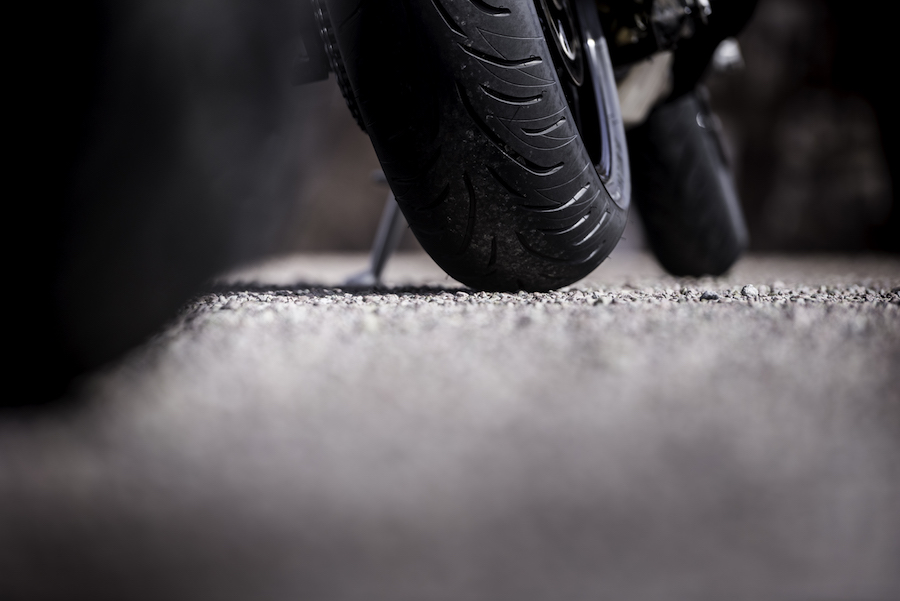Is there any tougher test bed than the harsh Moroccan desert to introduce a new adventure tyre to the market? Bridgestone doesn’t think so
Harsh, windy and unforgiving. An adventure tyre launch in the desert is certainly one way to show confidence in a new product – there is no escaping the punishment the African desert can deliver, and Bridgestone has been developing the new Battlax A41 and T41 range for the purest purpose – to get out and explore the world on two wheels.
The A41 replaces the A40, and Bridgestone says the main focus for improvement was wet grip, better handling in low temperatures, straight-line stability at speed, and simply better feel and feedback – but all without sacrificing wear life. Basically, making an already accomplished adventure tyre even better.
The design brief called for an updated tread pattern to help with water drainage and block deformation, as well as an upgrade to the contact patch size and pressure distribution.
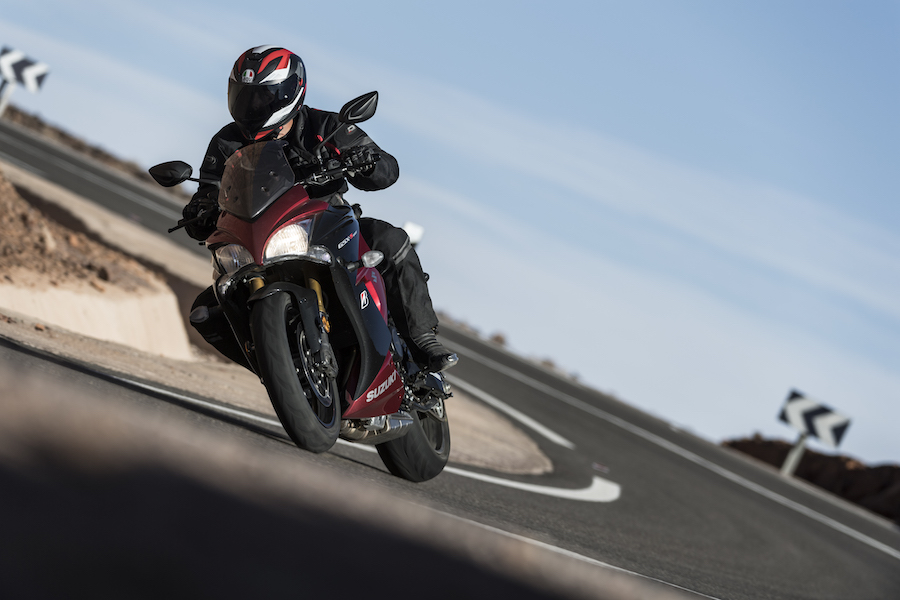
The first thing to bear in mind is that the tyre has its limitations when it comes to suitable terrain. This is not a knobby off-road tyre, it’s for adventure riders hitting gravel roads that don’t turn too gnarly. Think big-capacity bikes such as BMW’s GS range, Honda’s Africa Twin and Yamaha’s big-bore Tènèrè and you’ll get the idea.
The Battlax T31 is the A41’s sport-touring brother, an all-new tyre with the same focus for improvement, but with the added intention to “increase neutrality and lightness with increased camber thrust forces” or, to you and me, pushing harder through corners with more confidence.
Bridgestone started from a solid base with the A40 and T30 Evo predecessors, so given the advances in technology since their release, you’d expect the Japanese manufacturer (though it’s a global effort these days with 40 per cent of its workforce located in Europe) to be true to its claims, but there was only one way to find out…
To Morroco! Where hard-packed shale roads on big adventure bikes made up the opening day’s test on the A41s, followed by open highways with the T31 the following day.

Day 1: Road test – A41
The route for the A41 ‘Adventure’ tyre took us on an all-day loop through the mountains just outside Ouarzazate (I still can’t say it properly).
What I love about tyre tests is the opportunity to sample rubber across a wide range of machinery, and what we had to choose from included the heavyweight BMW R 1200 Adventure, Honda Africa Twin, Suzuki V-Strom 1000 and 650, KTM 1290 Super Adventure, and the Triumph Tiger 800 and 1200.
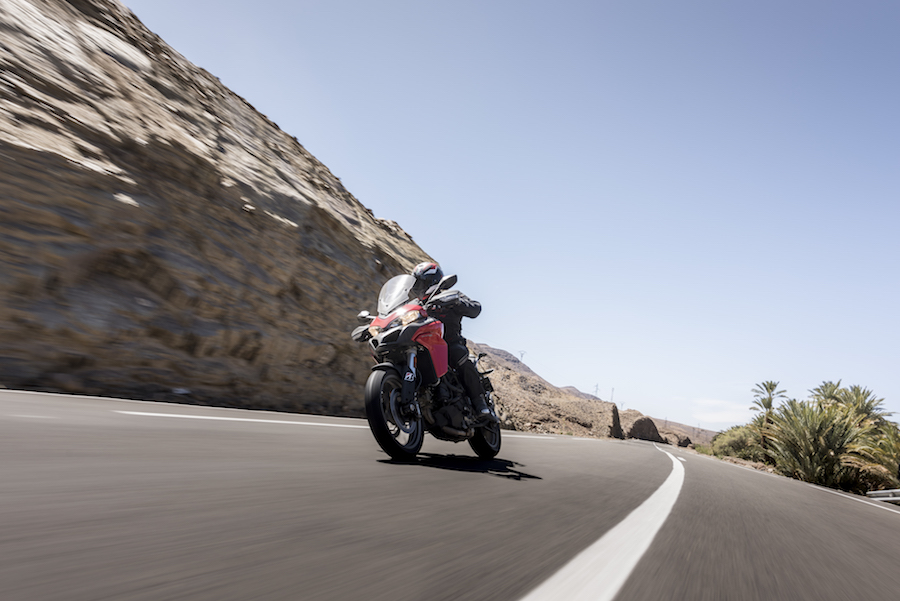
Conditions were almost perfect for riding; dry (unsurprisingly) and with temperatures in the low 20s.
My first steed was the smaller Triumph 800 and within 10 minutes we hit the gravel. The smaller Tiger was on song, both in engine note and roadholding.
A range of variables can deliver confidence in a bike, but throughout the day, as I switched from the Tiger to the larger GS, KTM to V-Strom, the result was the same – an instant secure feeling across the entire range of very different machinery. Which, of course, was exactly what Bridgestone hoped for.

The roads were fairly typical of what you might find in Australia, believe it or not; hard-packed gravel with plenty of looser sections to keep me on my toes.
The rubber produced exactly what Bridgestone said, with excellent drive out of corners and high-speed stability in a straight line.
After (literally) rocking the Kasbah for lunch, we hit the tarmac, where the same feeling was replicated. You could push really hard without any noticeable flex in the carcass, and the only conditions we had no chance of sampling was its performance in wet weather.
After a day of hard and fast riding there was no significant wear on either the front or rear, and Bridgestone estimates you’ll get about 10,000km out of these hoops.
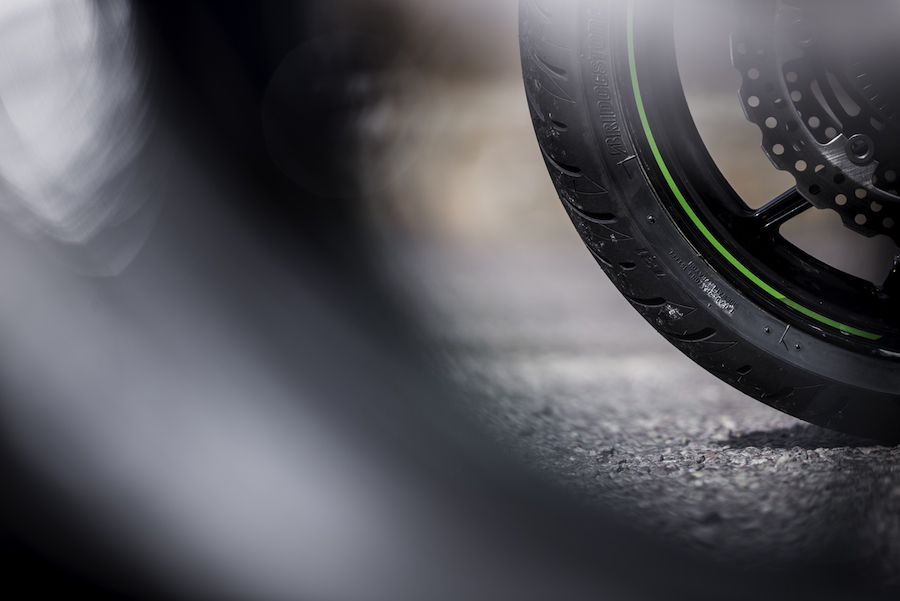
Day 2: Road test – T31
The second day saw a switch to road-focused machinery fitted with the all-new T31 tyres.
During the previous day’s A41 test, the bikes were of similar proportion and purpose, but for the T31 test the bikes were far more varied – Ducati’s Multistrada 950 and Monster 1200, BMW R1200R, Kawasaki Versys 650 and 1000, Suzuki GSX-S1000F, and Honda VFR800F.
We hit the twisty bits several kilometres out of Ouarzazate and through the day were led through some spectacular mountain passes with stunning scenery, and incredibly strong desert winds!
What I was looking for in these tyres was their ability to get up to temperature fast. We had plenty of stopping and starting – each time the tyres responded appropriately and, given the not-too-hot temperatures we were riding in, offered impressive grip almost straight away.
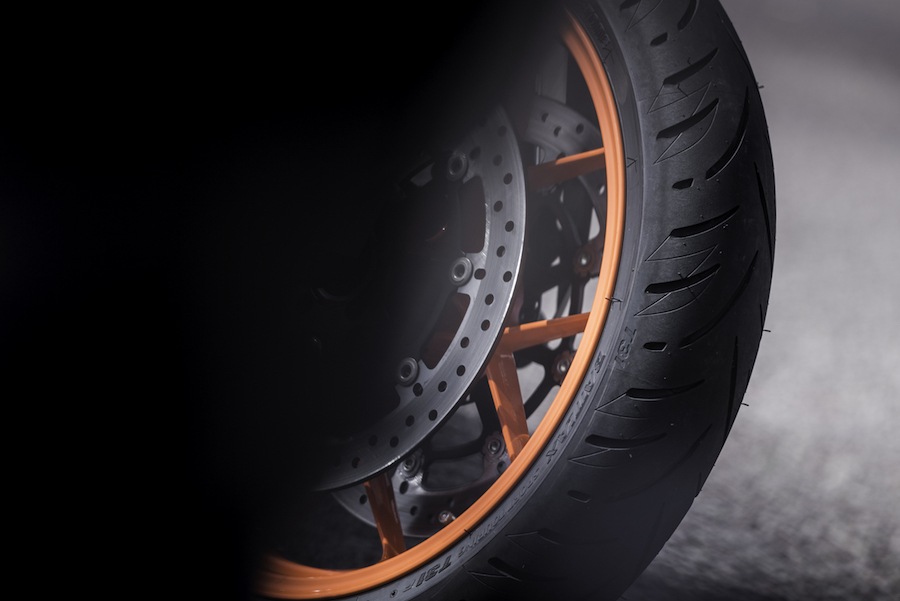
Even though the bikes were completely different to one another, I could corner from wall to wall without hesitation – smoothness was the key.
I’m going to single out the VFR here; it felt particularly responsive to input and was perhaps the smoothest of the bunch (maybe I just have a thing for V4s?).
We were pushing through the hills at a pretty decent clip and later several of the Bridgestone test riders commented they hadn’t really found the limit of the T31 yet – not that you’d want to, way out in the African desert.
Feedback from the rubber was reassuringly predictable, but the biggest thing that I took from this outing was not so much the excellent performance of the tyres – let’s be honest, a new-for-2018 Battlax was always going to be great – but more the way Bridgestone has adapted their manufacturing and development to produce such a consistent result across different styles of bike.
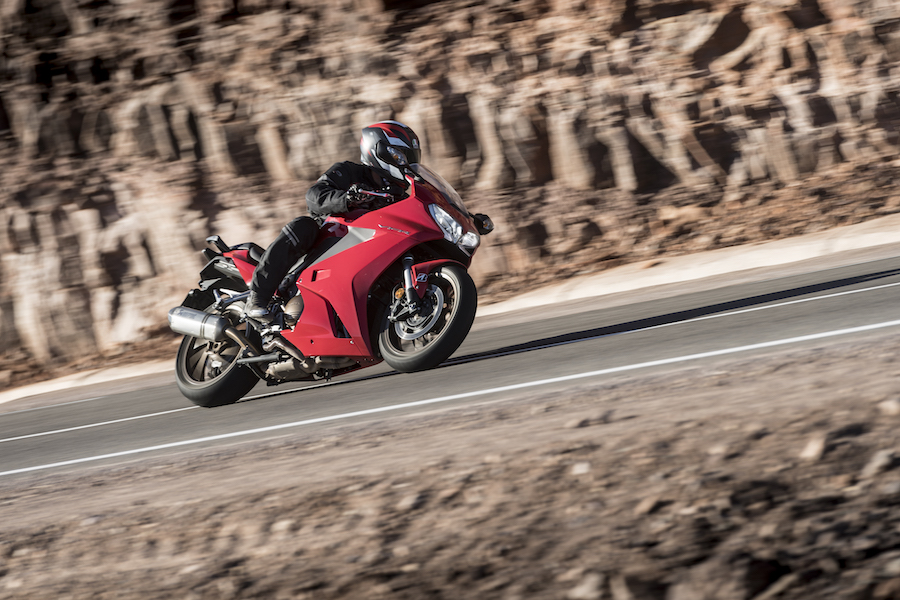
A41 Tech
R&D at molecular level means Bridgestone has made advances in how silica is dispersed inside the rubber. Three-layer technology is used in both the A41 and T31 fronts, whereas on the rear they use a technique known as three-layer cap and base. As the diagram shows, a harder compound is layered under a softer compound on the upper section of the shoulder, which helps to increase stability when cornering while maintaining cornering grip.
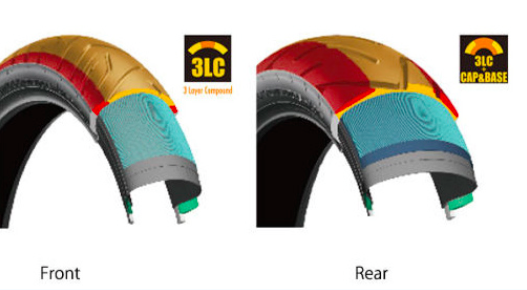
T31 Tech
What was changed from the T30 Evo? There is what is called an increased sea-land ratio (1) on the shoulder, which means there is an increased number of grooves that help with wet-weather performance. That sea-land ratio decreases in the centre (2), which increases block rigidity. The result is better braking in the wet and increased stability in a straight line. To help with corner drive, or camber thrust, the actual grooves are given a higher angle (3&4).
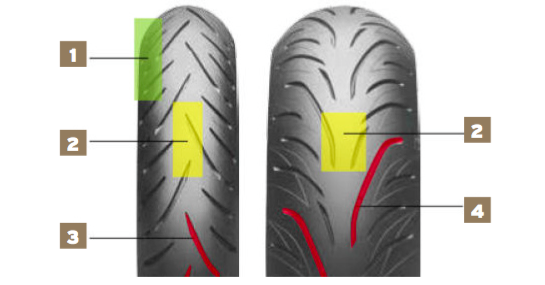
Verdict
The never-ending advances of technology mean the sports tyre of yesterday becomes the sports-touring tyre of tomorrow, and that rings true with both the T31 and A41.
What was common across both these new tyres was the consistent and predictable feedback available, which is my main criteria for a sports touring tyre, along with achieving high grip in a short period of time.
The Battlax fulfilled these with no problem and the fact they are OEM for an increasing range of motorcycles is another vote of confidence in my opinion.
Test riding for OEM tyre choice is nothing short of exhaustive, and the fact the Battlax can be found on premium brands like BMW, where skimping is not an option, only illustrates the point further.
Tyre companies put their reputations on the line flying journalists around the world to exotic locations like Morocco, and Bridgestone has the product to stand behind that.
I was enormously impressed by the high performance across such a wide range of bikes and the fact that the A41 and T31 is available in such a wide range of sizes.

Words Matt O’Connell
PHOTOGRAPHY Bridgestone

